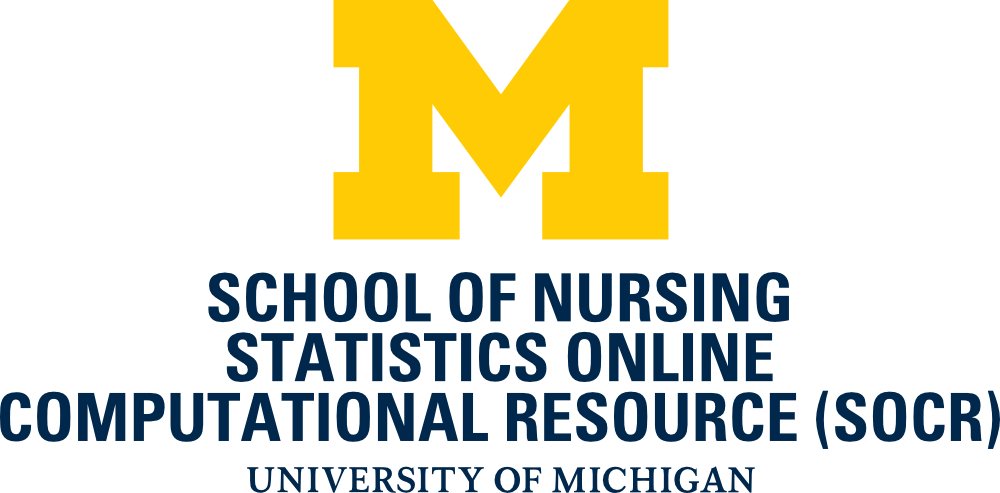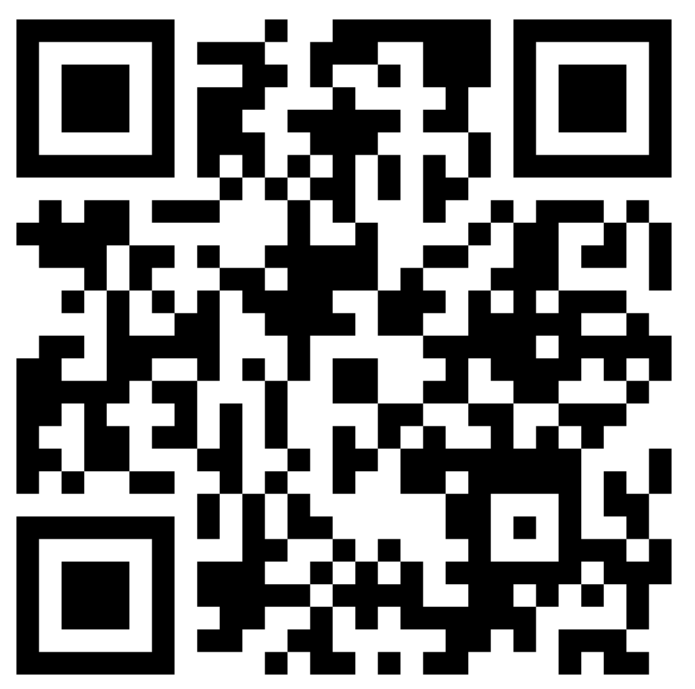Fall 2014: HS 550
Scientific Methods for Health Sciences: Fundamentals
Homework 2
- Due Fri, Oct 31, 2014
- Homeworks, projects and assignments
- Homework Submission Rules
- Homework Headers
- Problem 1: Using the SOCR Pediatric Normal and Schizophrenia Neuroimaging Dataset compute and contrast 2 measures of centrality, 2 measures of variability, and discuss the shape of the distributions of the following variables: Subject Intelligence Quotient, Total Brain Volume, Total Gray Matter Volume and Volume of R_superior_frontal_gyrus.. Try to fit normal distribution model to a couple of variables and discuss the results.
- Problem 2: Use R or SOCR to simulate a timeseries of a clinical data including 1,000 observations St satisfying: St=So e(vt+σ√tZ), where Z∼Normal(0,1) and the time, t, varies between 0, 1, 2, ..., 999. Choose some parameters for the baseline measurement So, the variance parameter σ2 and the slope constant v. Identify 2 different sets of parameters, (So,σ2,v), yielding significantly different timeseries (e.g., increasing, decreasing, static, stationary), and explain these discordances.
- Problem 3: Using the data in the contingency table below, compute the
positive (PPV)
and negative (NPV) predictive values, sensitivity
and specificity of the screening test.
Disease Status Test Performance Disease No Disease Screening Test Positive TP=123 FP=13 PPV=TP/(TP + FP) Negative FN=23 TN=856 NPV=TN/(FN + TN) Test Performance Sensitivity=
TP/(TP + FN)Specificity=
TN/(FP + TN) - Problem 4: Suppose a cognitive performance measure for TBI patients has variability associated with it quantified by σX=10. In many clinical studies we are interested in contrasting different cohorts (e.g., comparing an experimental intervention against placebo or classical treatment protocols). In such situations, we are interested in the sampling distribution of the mean response of a group of patients. If we take a sample of 10 TBI patient, what will be sampling standard deviation, σX¯ in terms of the standard deviation of the cognitive performance measure (σX)? Does it depend on the shape of the original process? How large should the patient cohort be so that σX¯=(1/2)σX? σX¯=0.1σX? Suppose the distribution of the cognitive performance scores for TBI patients is Generalized Beta(α=4, β=3, A=0,B=100), what is the probability that a randomly chosen TBI patient will have a cognitive test exceeding 90? Use the SOCR Modeler and (see RNG Activity) to generate a sample of 1,000 random cognitive scores from the same distribution ( Generalized Beta(α=4, β=3, A=0,B=100)). Find the proportion of cognitive scores above 90 and contrast this with the probability you computed above.


